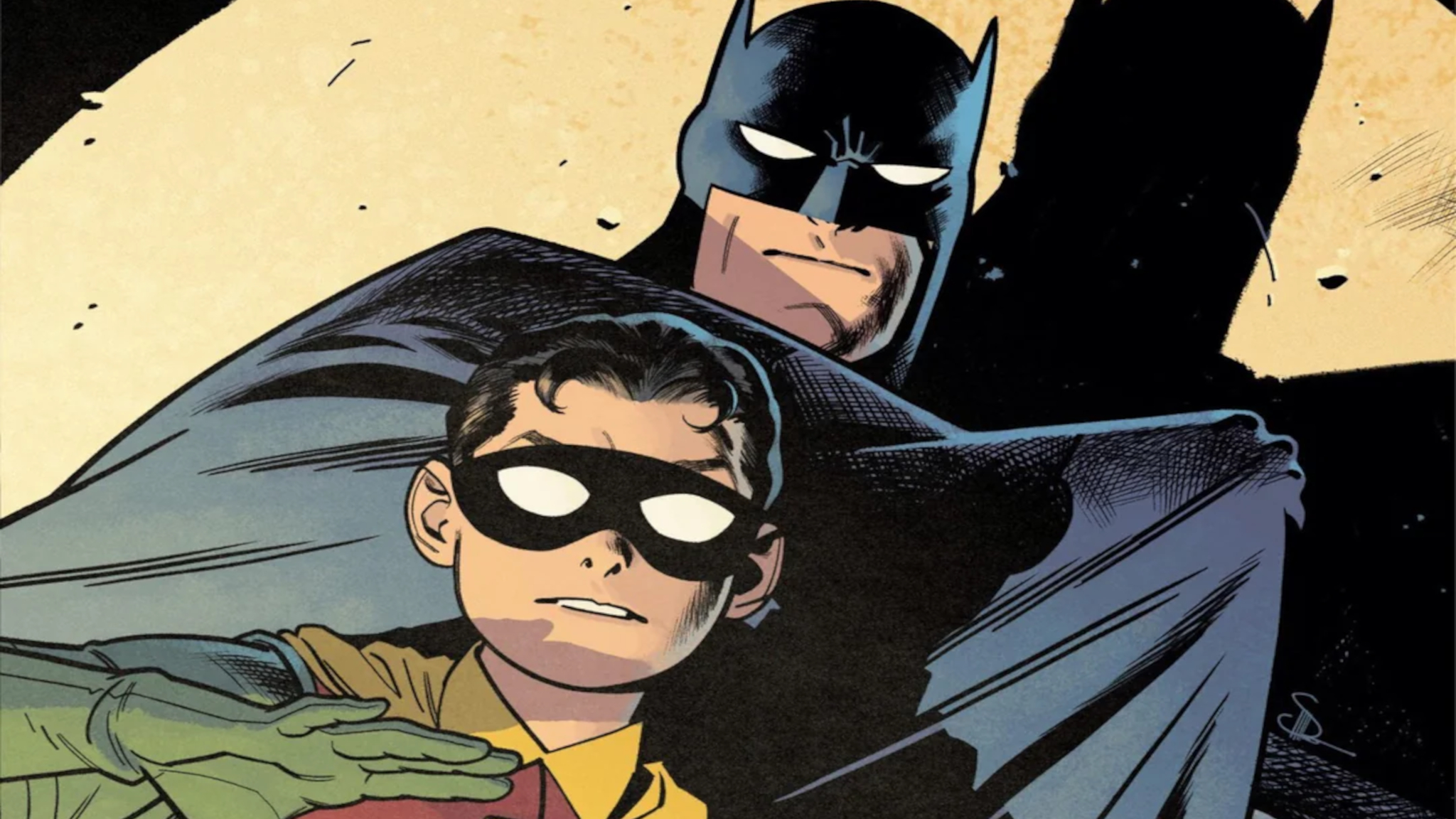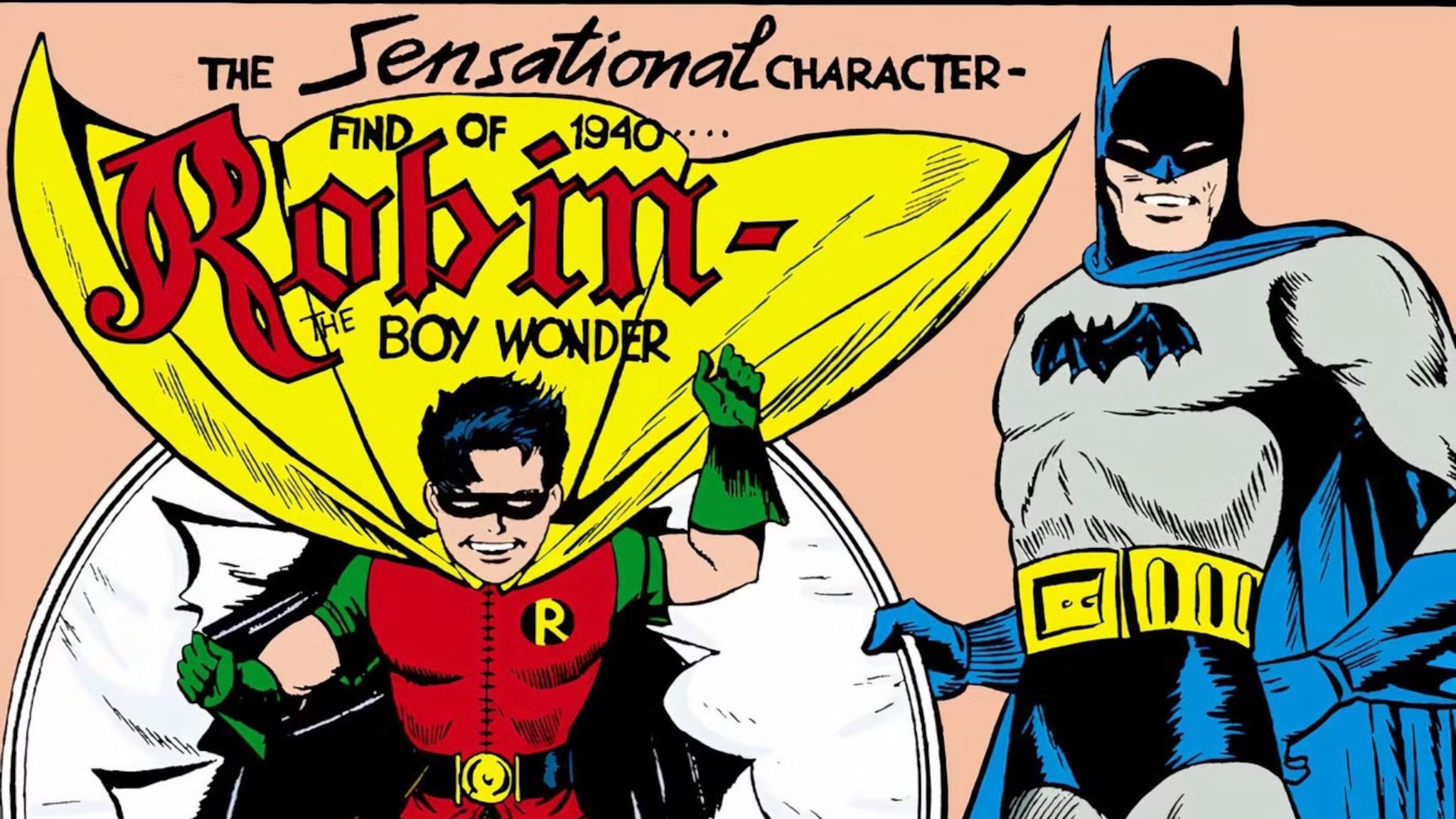
Robin, just like Batman, holds a significant place not only in DC Comics but also in the entire comic book universe. His longstanding presence almost matches that of Batman, with his debut happening nearly at the start. Countless other heroes have emerged since then, yet Robin has managed to outlast most of them. From the original Robin, Dick Grayson, to Damian Wayne and others, each Robin has contributed significantly to the development of comic book history.
Despite this, many modern portrayals of Batman tend to exclude Robin. Some wonder if it’s fair to involve a child in the battles that Batman regularly faces. However, I believe it’s crucial to acknowledge that Robin plays an indispensable role in how comics have evolved over time.
The Original Sidekick

Robin, a character introduced to offer a relatable younger counterpart for the growing audience, made his debut approximately a year after Batman in “Detective Comics” #38. This happened before Batman even had his own comic book series. The creation of Robin was inspired by traditional pulp detective stories and comics, where a sidekick would follow the lead character and serve as an ordinary person’s perspective. However, Robin surpassed the role of merely being another detective’s assistant. He quickly became popular and remained a key figure for many years. Readers already admired Batman for his exceptional abilities, but with Robin, they found someone who filled a gap between them and Batman. This character was young enough to be taught by Batman, creating a connection with the audience, yet extraordinary enough to share the spotlight with the Dark Knight.
Robin, Batman’s companion, wasn’t merely portrayed as a less capable assistant, but rather as an equal partner. Although Batman held the position of authority, Robin played a significant role in their joint adventures and was treated with respect by Batman. Robin wasn’t diminished or belittled, but presented as a young character that the audience could identify with, someone who stood shoulder-to-shoulder with the legendary Batman. In essence, Robin represented the perfect power fantasy of meeting one’s hero and being more than just an apprentice – he was the ultimate pupil to the world’s most iconic mentor. This portrayal struck a chord with fans, who appreciated seeing a character they could relate to taking on the role of the main protagonist. Over the years, many heroes have attempted to emulate this dynamic, but Robin has endured due to his consistent portrayal as an equal partner, making it easier for readers to connect and identify with him.
The significant rise in the cultural influence of superheroes can be attributed largely to Robin’s widespread appeal. A glance at Justice League memorabilia from prior to the 1980s will often reveal Robin associated with a majority of these items. From the serial films in the ’40s, the Super Friends cartoon, and beyond, Robin was consistently by Batman’s side in adaptations of that era. His popularity soared due to his particular appeal to younger audiences, a factor that has played a significant role in the emergence of today’s teen heroes.
Robin Created Legacy

As a movie critic, I’d say:
Robin, the original Boy Wonder, played a groundbreaking role in shaping the landscape of teenage superheroes, paving the way for modern characters like Miss Marvel and various iterations of the Teen Titans. He was one of the first instances where legacy became a recurring theme in comic books.
While other heroes had swapped roles before, such as Barry Allen stepping into the shoes of The Flash and Hal Jordan taking over as Green Lantern from the original bearers, Robin stands out as one of the initial examples of a highly popular superhero passing on their mantle to another character within the same universe.
Though fans might have had mixed feelings about Jason Todd’s introduction as the second Robin back in the day, Dick Grayson transitioning out of the role and Bruce Wayne choosing to carry on the identity was a significant turning point in comic book history. Up until that point, character identities changing hands were often due to factors like low sales or cosmic reboots. However, given Robin’s massive popularity, this transition marked a departure from the norm.
In my own words, I’ve come to realize that the role of Robin isn’t confined to just one individual; it represents a powerful concept that transcends personal identities. DC comics have always emphasized the theme of legacy, with new heroes stepping into the shoes of their predecessors. Initially, Robin was simply a stand-in for the audience, embodying Dick Grayson’s character. However, over time, characters like Jason Todd, Tim Drake, Stephanie Brown, and Damian Wayne emerged, each bringing their unique traits to the table.
Jason Todd, the rebellious one, was initially a carbon copy of Dick Grayson but evolved into a distinct character. Tim Drake, on the other hand, demonstrated intelligence by uncovering Batman’s identity and requesting the role. Stephanie Brown proved that she could rise above expectations, despite being constantly told she couldn’t. Damian Wayne, an assassin, learned the value of life and transformed into a hero.
In essence, Robin symbolizes the potential for growth and transformation within us, inspired by our heroes. It’s not about mimicking them, but learning from their virtues and striving to better ourselves in their image.
As a passionate film enthusiast, I find myself deeply appreciating the role that Robin plays within the world of Batman’s stories – a character who remains just as vital today as ever. You see, every child needs a hero to admire, and those captivated by superheroes find inspiration in characters like Robin.
Robin, along with other sidekicks, serves as a reflection for these young fans – demonstrating that they too can rise up and do what’s right by emulating virtuous mentors. Through their journey, they learn to become heroes themselves. Comic books are all about distorting reality in order to inspire and uplift, and Robin embodies this essence perfectly.
Though Robin may not be a real child, his positive impact is very tangible and meaningful. He’s an icon, one that we need to see more of within Batman media – an influential figure who continues to inspire generations of readers and viewers alike.
https://comicbook.com/comics/news/best-5-robin-costumes-batman-dc-comics/embed/#
Read More
- Ashes of Creation Rogue Guide for Beginners
- ARC Raiders – All NEW Quest Locations & How to Complete Them in Cold Snap
- Best Controller Settings for ARC Raiders
- Ashes of Creation Mage Guide for Beginners
- Fishing Guide in Where Winds Meet
- Eldegarde, formerly Legacy: Steel & Sorcery, launches January 21, 2026
- Hazbin Hotel season 3 release date speculation and latest news
- Netflix’s One Piece Season 2 Will Likely Follow the First Season’s Most Controversial Plot
- Bitcoin’s Wild Ride: Yen’s Surprise Twist 🌪️💰
- Where Winds Meet: How To Defeat Shadow Puppeteer (Boss Guide)
2025-08-24 21:41